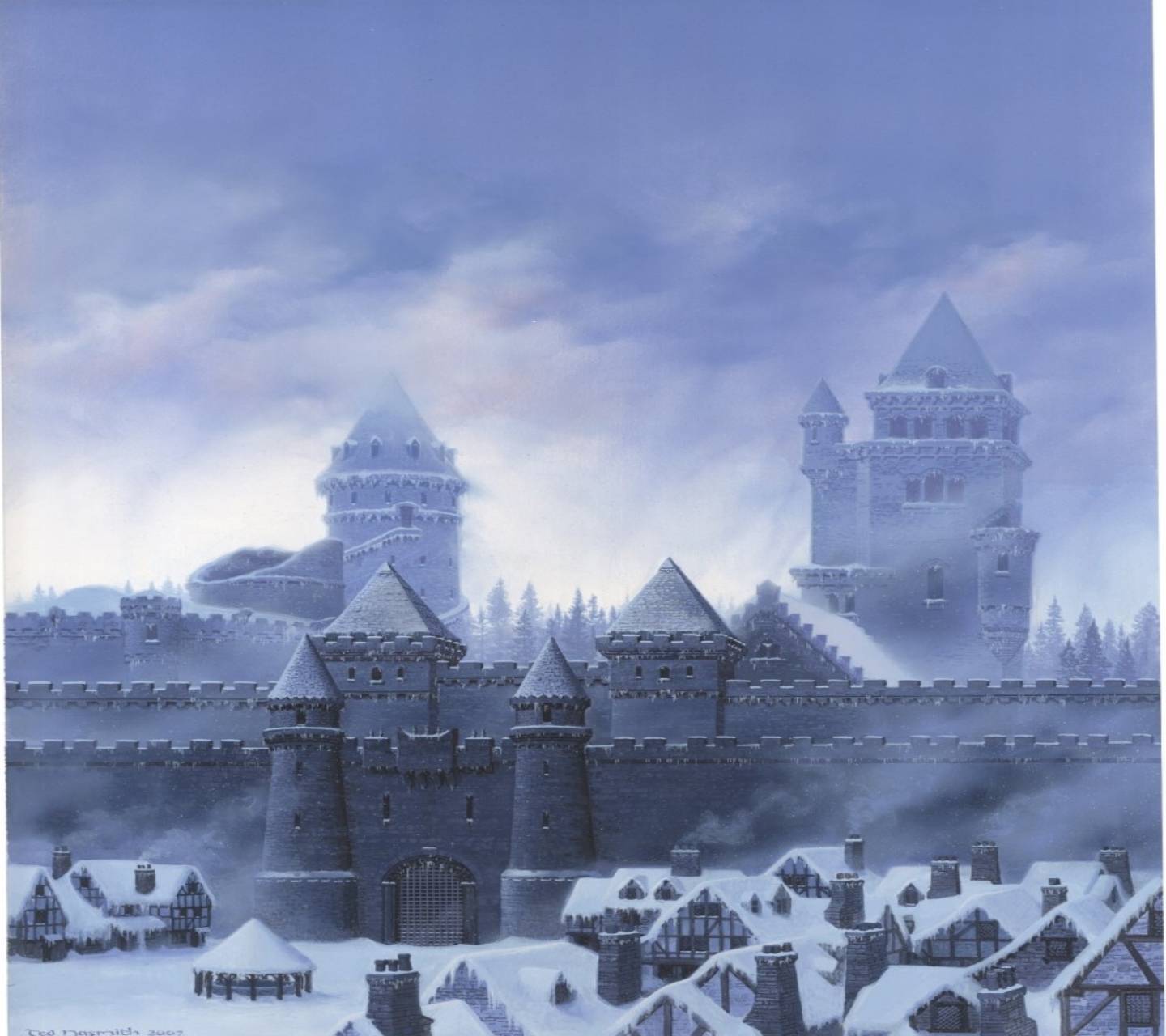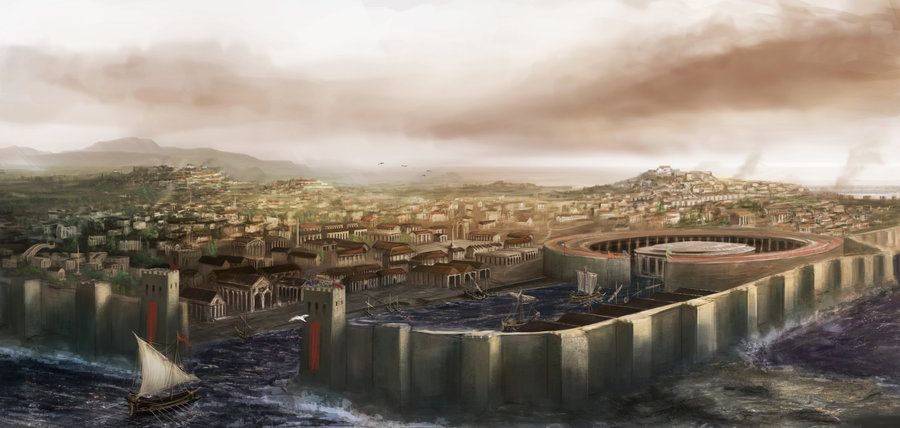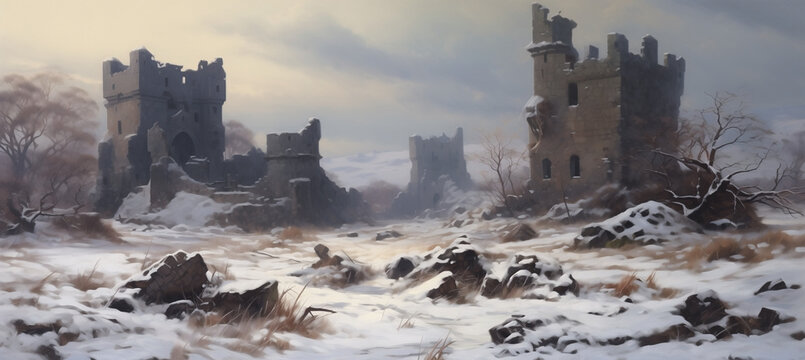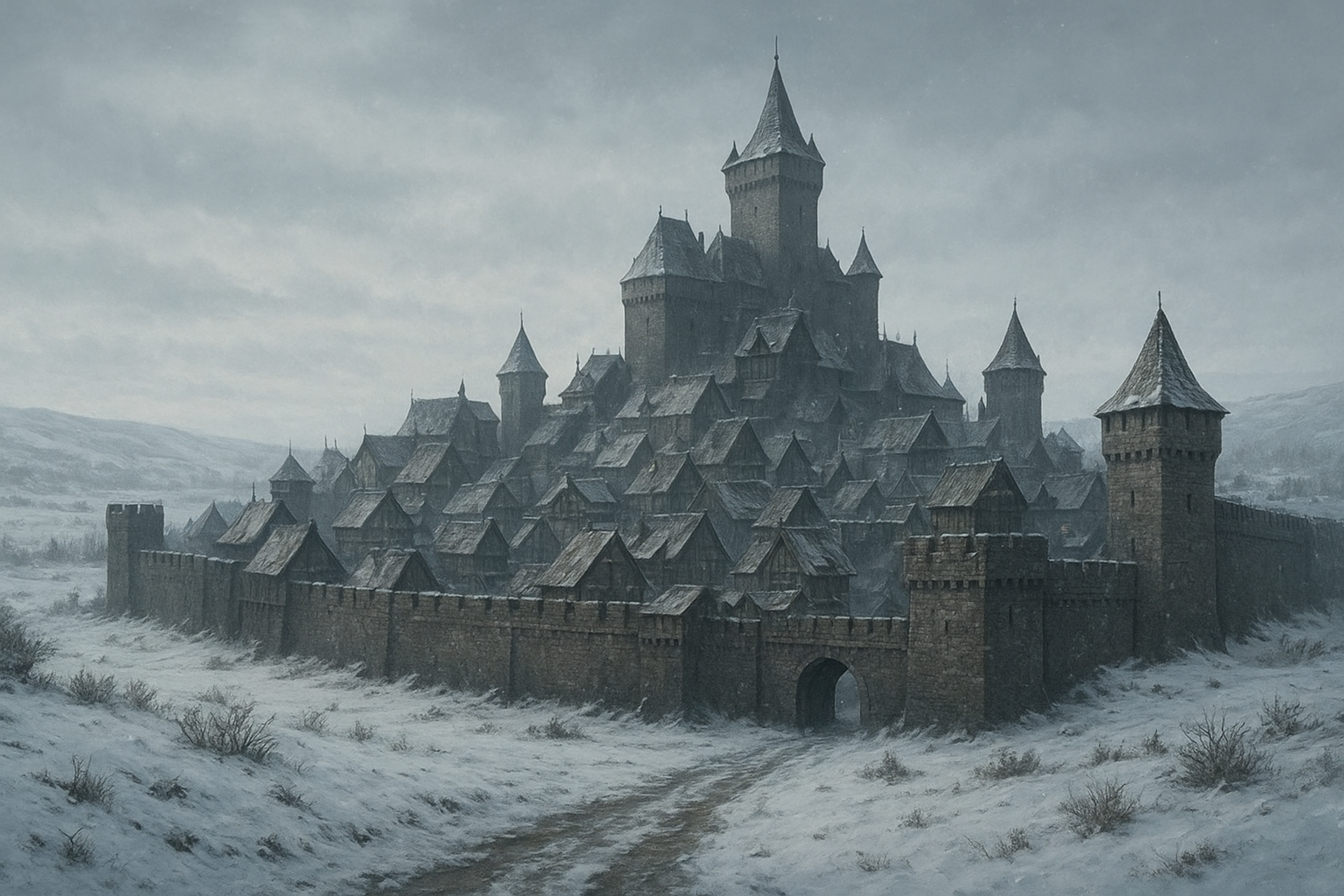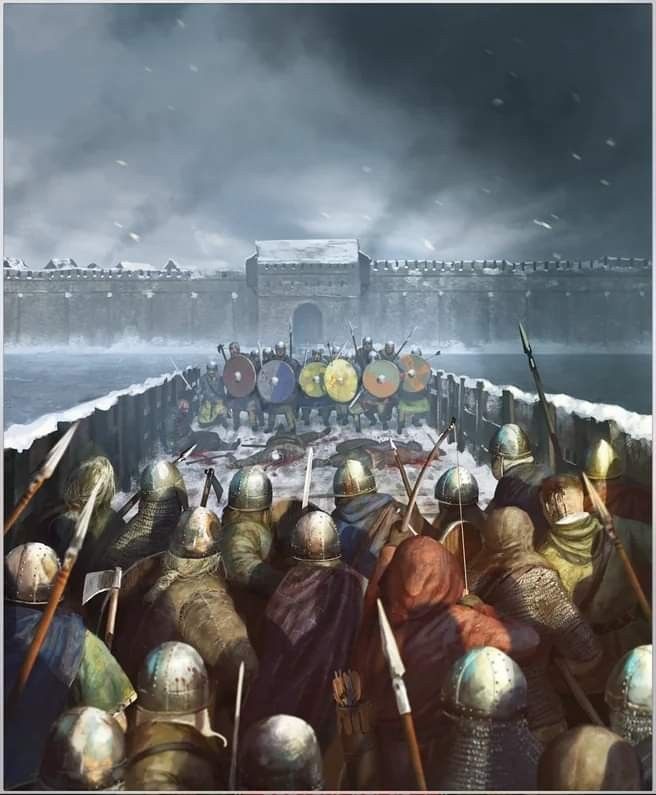Gaelic
History
The Gælic people have been a warkind since their earliest days, their origins steeped in the Wealch bloodline yet marked by a defiant disregard for magic, sparking myths and legends surrounding the birth of this proud culture. To them, magic was seen as a insult that undermined their pursuit of true potential, a belief that shaped their culture into one of discipline and relentless strength and cunning. Their warlike nature carried them far from their homeland in the rugged riverland today known as North Frankia to the icy shores of the north and the storm-beaten Heimisles. While they rejected the practical use of magic, their heritage holds glimpse of magic, thought to linger in their most ancient traditions, particularly in their reverence for the dead. Through subtle forms of necromancy, the echoes of the fallen are guided to rejoin their remains in the underworld to finally rest complete, a sacred ritual that underscores their deep connection to ancestry and the eternal cycle of war and death. The Gælic culture rose as warbands drawn to blood and fighting, where the most capable were named leader, Jarl.
In their early days, the Gælic were unmatched seafarers, hailed as the most prized navigators of Valklora and perhaps the entire known world. They commanded ships crafted to defy the wrath of seas and oceans, embarking on journeys that ventured into the unknown, reaching lands no man has dared tread since. This mastery of the waves was matched only by their appetite for blood and war, which earned them the enmity of neighboring cultures, especially the Nædrans. Tales still tell of bloody conflicts that drove the Nædrans southward, a migration many believe was spurred by the relentless Gælic incursions. Their deliberate rejection of magic deepened the mystery surrounding their origins, leading some to speculate that they are neither wholly Nædran nor Wealch, but descendants of an ancient and forgotten lineage, lost to the whispers of history.
By the end of the Second Age and throughout the Third, the Gælic people suffered a series of catastrophic defeats that nearly extinguished their kind. The rising power of the Franks overwhelmed them, seizing their lands and scattering their people. Forced to retreat, they entrenched themselves in the frigid northern reaches, in the land now known as Gælie. Their once-proud traditions of sailing and shipbuilding, which had made them legends of the seas, began to fade into obscurity. Only distant colonies, such as those in Okkrum, preserved fragments of this seafaring legacy and formed their own culture from it. Stripped of their dominion over the waves, the Gælic turned their focus inward, honing their skills as warriors of the land. Dreaming of reclaiming the sunlit lands they had lost, they perfected the art of shield combat, crafting massive yet deceptively light shields and developing various formations capable of crushing any foe. Their new traditions of war became a symbol of resilience, fueling hatred for other cultures and hoping for their demise. Giving them fierce antipathy towards those unrecognized as their own through their unique bloody hair.
Throughout history, the Gælic people retained an unshakable unity among their kin, forged in the fires of shared hatred from their neighbors. The devide made even greater once the rise of the mediaries complete in the third age, adding faith into the folds of differences. This deep bond served them well during the time of the Scourge, when the world faced an otherworldly invader. Viewing the chaos as their ultimate chance to assert their supremacy and conquer all, the Gælic prepared to seize the opportunity. Yet, their unwavering sense of honor and duty compelled them to set aside their ambitions and aid even their former foes in vanquishing the invader. When the Fourth Age dawned, and many civilizations crumbled under the power vacuum left in the Scourge’s wake, the Gælic emerged unbroken. Their unity, as ever, remained their greatest strength, allowing them to stand firm and weather the storms of a world in turmoil.
Traits & Personnality
Physically, the Gælics are distinguished by their striking red hair, a fiery hue giving credit to the myths saying they are touched by flames or bathed in blood, marking them as true heirs of their lineage. While some bear a softer, orange-toned hair, this is seen as less pure but still fully accepted within their community, for the essence of Gælic blood remains undeniable. Their eyes, vivid blue like the seas they once sailed or verdant green like the land of their ancestors. Often labeled as barbaric and savage by outsiders, the reality is far more nuanced. While a few embrace a rugged, untamed lifestyle, the majority are refined in dress and demeanor, presenting a sharp contrast to these stereotypes. In fact, it is not uncommon for Gælics to exhibit a level of civility surpassing even the southern peoples, as their ferocity is reserved for enemies, not kin. Within their own, they carry themselves with pride, honor, and a surprising grace that belies their fearsome reputation.
The Gælic people are known for their aggressive and determined nature, shaped by a fiercely meritocratic society that rewards action and ambition. This fosters a culture of intrepid bravery tempered by cunning strategy, as they relentlessly pursue their goals. Above all, Gælics value respect for their kin and blood, a bond that unites them in an unbreakable familial network. To them, neighbors are as much family as blood relatives, while foreigners are viewed with deep suspicion, a divide strengthened by their cultural reverence for red hair, which they see as a mark of unity and superiority. Family ties extend beyond the household, with most Gælics treating all of their kind as kin, creating a society where the well-being of one reflects on the whole. What benefits a single Gælic benefits all, as they view themselves as integral pieces of a greater cultural identity. Honor and duty are the cornerstones of their character, with their word being their bond, not out of fear of curses or reprisal, but because breaking one’s word is seen as the ultimate display of weakness and cowardice. This steadfast commitment to integrity underscores their relentless spirit and collective strength.
Realms & Nobility
The realms of the Gælic people are structured around settlements led by jarls, individuals deemed worthy of leadership by the warriors. There is no single supreme leader among them; instead, the jarl with the greatest following often wields the most influence. Despite the lack of centralized authority, the Gælic realms are marked by remarkable cohesion, driven by the mutual respect held for the jarls and the meritocratic principles that underpin their rule. Succession is not determined by bloodline, though noble heritage can provide a foundation for one’s reputation. Leadership is earned through deeds and accomplishments. When a jarl steps down or passes, the individual with the greatest achievements is chosen to succeed them, typically judged by the current jarl, council of warriors or elders of a settlement. However, the process demands careful impartiality, as a misstep or perceived bias could spark conflict among the fiercely proud and honor-bound Gælic people.
Nobility in Gælie is rooted purely in measures of personal success, creating a society where merit trumps birthright. A farmer who cultivates a prosperous estate holds the same influence as a renowned warrior, reflecting the Gælic emphasis on accomplishment over lineage. The closest they have to a true elite are the jarls' retinues, the huskarls, whose loyalty, skill, and martial prowess position them as a crucial force akin to knights in other realms. However, this does not foster an aristocracy; power and respect remain fluid, grounded in tangible achievements rather than inherited titles. The Gælic realms also sustain a robust slave market, fueled by their frequent raids and reliance on the profits such captives bring. Slaves are often sold, yet those who find themselves adopted into Gælic households face grueling conditions. Despite this, the Gælics’ meritocratic principles extend even to slavery. The most capable or deserving are often granted their freedom after proving their worth, earning a place within Gælic society. Unlike other cultures, no magic or spells bind these individuals to servitude; their enslavement is finite, governed by the same values of achievement and honor that define all aspects of Gælic life.
Traditions
The Gælics’ deep-seated racism largely remains within their own borders, but they demonstrate a pragmatic understanding of their status as foreigners when traveling without intent to raid. In some cases, a foreigner can earn the respect and trust of a Gælic native through exceptional deeds, loyalty, or shared hardships. When this bond is formed, it is tradition for the Gælic to tie a strand of their vibrant red hair into the foreigner’s, marking them as trusted and honored. This simple yet profound gesture signifies that the bearer has earned a measure of Gælic respect—enough to be trusted with all that is precious to the one who offered it. In Gælie, this strand of red hair serves as a protective token, allowing the bearer to travel through Gælic lands without facing the usual hostility born from their ingrained racism. However, it does not grant friendship or acceptance from all Gælics; it is merely a sign of trust extended by an individual. Some Gælics may still view the bearer with suspicion, but the strand is a powerful symbol that often keeps outright aggression at bay. A person may collect more than one strand of red hair over time, each symbolizing trust earned from a different Gælic individual. The more strands tied into their hair, the more they are regarded as part of Gælic society, though true acceptance is rare and hard-earned. These strands act as a visual testament to the respect and trust they have garnered, making them an unusual but noteworthy figure in the fiercely united Gælic culture.
The Helkvad, the lament of the lost, is a solemn and secluded ritual in which the Gælic honor their dead, particularly those who have fallen in battle far from their homeland. This ritual is reserved for those whose deaths are deemed prone to unrest, where their flesh and bones might rise in anger or their souls might linger as haunting echoes. The ceremony begins as an open and inviting gathering, welcoming all who wish to pay their respects to the fallen. Though it is deeply reverent and meaningful, it is not bound to a specific date, as the Gælic believe the dead should be honored when the need arises, rather than at a prescribed time. This lack of a fixed schedule allows the community to come together organically, uniting in shared grief and reverence whenever the circumstances demand. The openness of the ritual fosters a sense of collective strength and remembrance, ensuring that the deeds and sacrifices of the departed are never forgotten. Participants encircle a pyre, weaving together chants and songs that are purely phonetic, believing words are for the living, soothing the restless souls. The melodies, translation of the singers fellings into sound, are believed to resonate with the echoes of the deceased, guiding them to peace.
Traditionally, the Gælics live in well insolated wooden homes, built to endure the harsh northern climates. In villages and towns, the taller homes are clustered closer together, serving as natural windbreakers that shield the rest of the settlement from the relentless gales. Surrounding these settlements are stone walls, not constructed primarily for defense against enemies but as barriers against the wind. These walls are elevated high but kept thin if stones are scarce, their strength concentrated in the direction of prevailing winds to provide maximum protection. These stones often traded with currency or blood. Their diet reflects the land’s rugged bounty, relying heavily on breeding grounds and hardy northern crops. Honey, nuts, and refined sap hold a special place in their culinary traditions, adding a touch of sweetness and richness to their meals and drinks. Among their most prized beverages is goldshine, a unique brew that balances the tartness of cider with the sweetness of mead, celebrated as the perfect harmony of their love for nature’s offerings.
Learned
- Shield Bearer (Shield +1, +1 ability with the shield)
- Bloodthirsty (After a kill, recover stamina equivalent to a cold turn)
- Legacy Pride (Unaffected by fear factors if one or more party is not afraid)
- Great Wielder (Wielding large weapons cost less stamina, even if requirements are not met)
Inate
- Cold Resistant (Cold only has an effect if one is in direct contact to it)
- Second Breath (Adds a will check of stamina, but remove it to total after 3 turns)
- Thick Bones (Broken bones do not impact the body as much)
- Scar Tough (After x amount of critical hits, the skin hardens, adding layers of defense)
